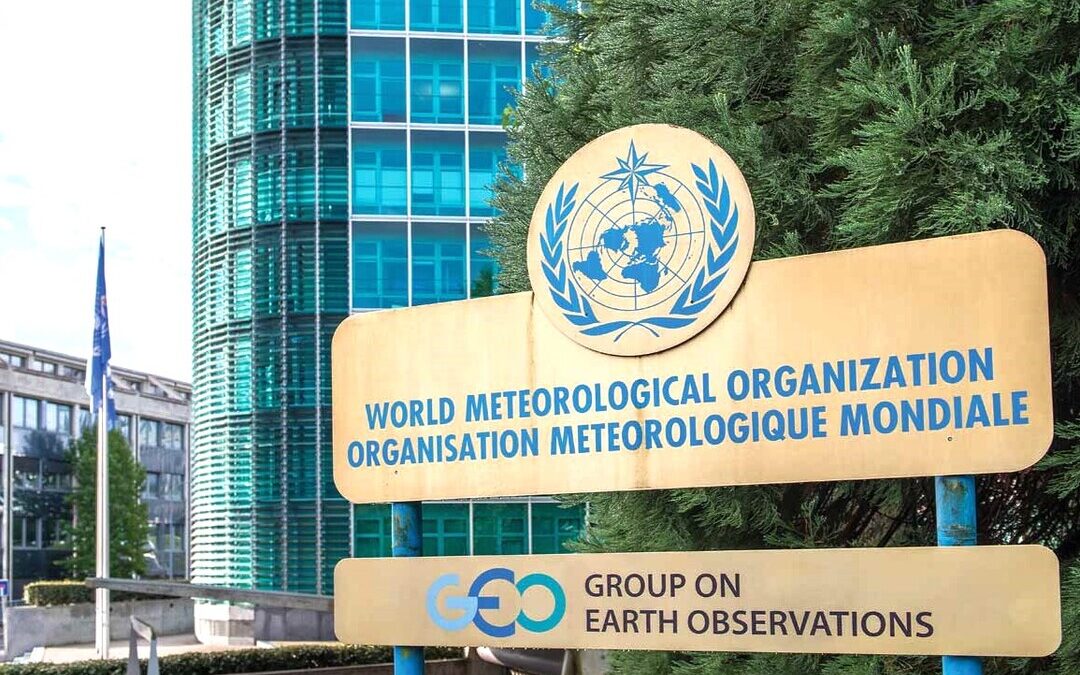Global Temperatures Surge to Record Highs Amid Rising Emissions: WMO
The rising concentrations of primary greenhouse gases reached unprecedented levels in 2023 and are expected to continue their upward trend in 2024.
Global temperatures are on track to reach record levels in 2024, driven by rising greenhouse gas emissions and the El Niño phenomenon that has elevated global temperatures beyond previous records, the World Meteorological Organization reported on Monday.
Data indicate that from January through September, temperatures were 1.54 degrees Celsius above pre-industrial averages, raising concerns over the pace and extent of climate warming worldwide.
The report underscores the rising concentrations of three primary greenhouse gases — carbon dioxide, methan, and nitrous oxide — which reached unprecedented levels in 2023 and are expected to continue their upward trend in 2024.
Carbon dioxide, which has risen from 278 parts per million in 1750 to 420 ppm today, has been a dominant contributor to global warming, while methane and nitrous oxide have also significantly increased since pre-industrial times.
Since the early 2010s, global mean temperatures have climbed steadily, making 2015-2024 the warmest decade on record. Experts warn that surpassing the 1.5 C target of the Paris Agreement in the long term is no longer a hypothetical threat but an imminent reality.
WMO officials stress that while the 1.5 C threshold has not been consistently exceeded in long-term averages, transient surpasses due to natural climate variability, such as El Niño, may now occur frequently.
“The warming trend is unmistakable, and El Niño is only accentuating a trajectory we’ve been observing for decades,” said Petteri Taalas, Secretary-General of WMO. “The data indicate that 2024 could stand as the warmest year in recorded history.”
Melting Ice and Rising Oceans
The warming impacts are already visible in polar regions, with Arctic and Antarctic sea ice levels falling dramatically below average. Antarctic sea ice reached its minimum extent in February 2024, just above the record low of 2023, while the Arctic recorded its seventh-lowest extent in September 2024. Glacier ice loss reached an unprecedented level in 2023, with glaciers worldwide melting at rates that equal five times the water volume of the Dead Sea.
Glacier melt and thermal expansion of ocean waters are also accelerating sea level rise, which, according to the WMO, has now doubled since the 1990s to nearly 5 millimeters per year from 2014 to 2023.
Rising seas are already reshaping coastlines and threatening communities, ecosystems, and infrastructure.
According to the WMO report, these impacts, exacerbated by climate variability, are projected to worsen, leading to potential loss of land, more severe flooding, and further habitat loss for marine and coastal species.
The Ocean’s Role in Absorbing Heat and Climate Consequences
The world’s oceans continue to absorb massive amounts of heat. In 2023 alone, oceans absorbed an estimated 3.1 million terawatt-hours of heat—equivalent to 18 times global energy consumption. Ocean warming has spiked in the past two decades, and it shows no signs of abating, contributing to coral bleaching, altered marine ecosystems, and more intense storms as warmer ocean temperatures fuel atmospheric instability.
Climate Services and Early Warning Systems
In response to escalating risks, significant advances in climate services have provided vital information for decision-making. WMO reports that 108 countries now operate Multi-Hazard Early Warning Systems, critical climate resilience tools that warn about potential disasters. Such systems have become essential in helping governments and communities prepare for extreme weather events, protecting lives, and reducing economic losses. Yet, gaps remain, particularly in less-developed regions, where infrastructure and funding shortfalls hinder comprehensive climate response.
To extend access to early warning systems, the “Early Warnings for All” initiative aims to provide universal early-warning coverage by 2027. While this goal represents a significant stride in climate adaptation, substantial funding and international collaboration will be necessary.
A Renewable Energy Push at COP28
The intensifying climate crisis also highlights the urgent need for renewable energy expansion. The recent COP28 summit set ambitious targets to triple global renewable energy capacity and double energy efficiency by 2030. Experts argue that understanding and anticipating climate variability is essential for optimizing renewable energy generation and enhancing grid stability.
A forthcoming study by WMO, in collaboration with the International Renewable Energy Agency, will analyze shifts in key energy indicators across various regions, including wind, solar, and hydropower potential. Initial findings suggest that renewable energy generation in 2023 benefitted from climate anomalies like drier, sunnier conditions in South America and stronger winds in East Asia, which can significantly influence energy production. However, water scarcity remains a concern for hydropower and other water-intensive renewable energy sources.
The Path Forward: Defining and Tracking Warming Goals
The WMO report emphasizes the importance of accurately defining and tracking progress toward the 1.5 C and 2 C warming targets set in the Paris Agreement. While these goals are based on long-term averages, the variability of natural climate events, such as El Niño, creates significant year-to-year fluctuations. WMO and other international bodies are working to establish a consistent metric to monitor global temperatures, ensuring countries can effectively measure, report, and respond to climate warming in real time.

